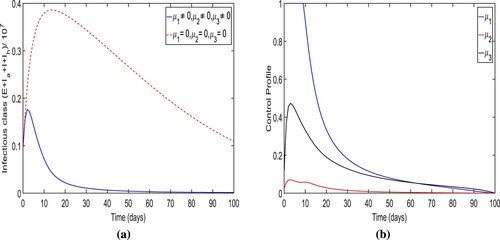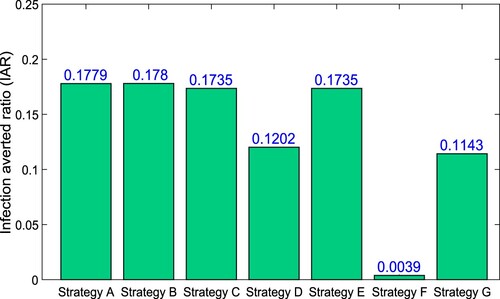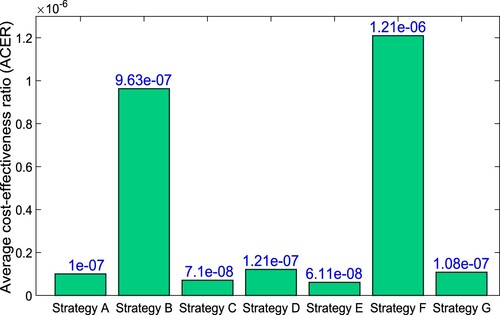Figures & data
Figure 1. Flow diagram of model (Equation1(1)
(1) ).
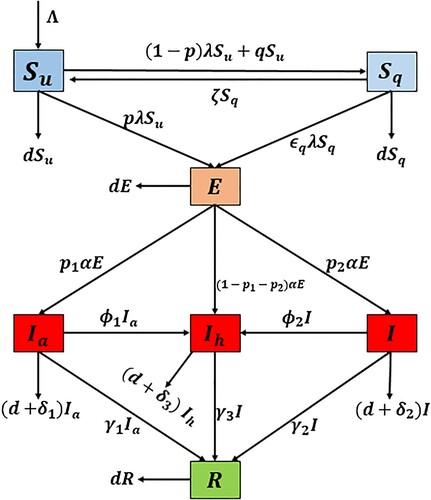
Table 1. Biological interpretation of the model parameters used in system (Equation1(1)
(1) ).
Figure 2. The figure shows the bifurcation analysis discussed in Section 3.4.1. (a) backward bifurcation when imperfect quarantine is implemented and (b) backward bifurcation when perfect quarantine is implemented
.
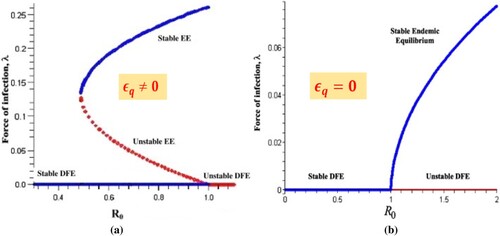
Figure 3. (a) The histogram of MCMC chain for parameters β and with 100, 000 sample realizations. (b) Fitting results of reported cases for India to the model output.
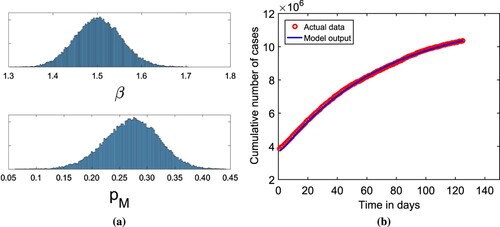
Table 2. The estimated values of model parameters with its
confidence interval obtained via MCMC method.
Table 3. Initial conditions for the system (Equation1(1)
(1) ).
Table 4. The table contains numerical values of model parameters used for transmission dynamics of system (Equation1(1)
(1) ) for COVID-19 in India.
Figure 4. The long-term dynamics of the model system (Equation1(1)
(1) ) when
The figure ensure the local stability of the disease free equilibrium.

Figure 5. The long-term dynamics of the model system (Equation1(1)
(1) ) when
The figure ensure the local stability of a EE when
.

Figure 6. The long-term dynamics of the solutions of model system (Equation1(1)
(1) ) when
The figure ensure the local stability of a endemic equilibrium when
.
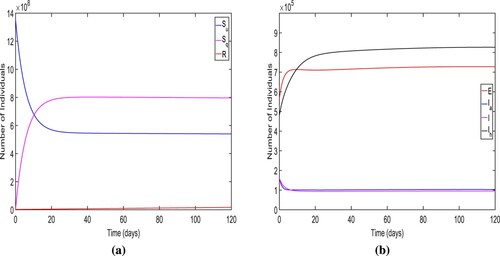
Figure 7. The figure represents the normalized forward sensitivity index for the given in Equation (Equation4
(4)
(4) ).
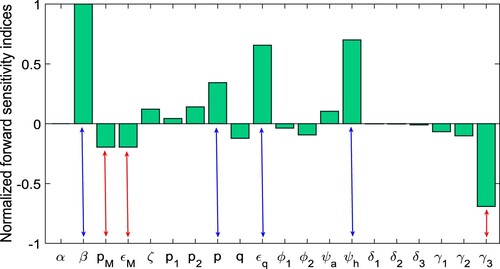
Figure 8. The figure depicts the PRCCs for the basic reproduction number given in Equation (Equation4
(4)
(4) ).
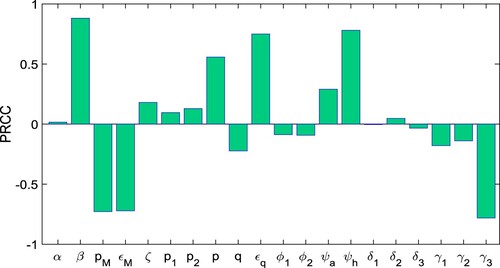
Figure 9. The figure depicts the threshold dynamics of discussed in Section 3.5.
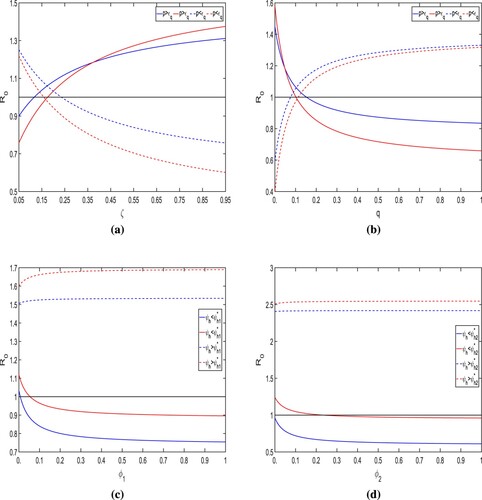
Figure 10. The figure depicts the impact of important model parameters on the for model system (Equation1
(1)
(1) ). The numerical values of all parameter other than (a)
and
; (b) ζ and q; (c)
and
; (d)
and
are given in Tables and . (a) Effect of
and
on basic reproduction number
(b) Effect of ζ and q on basic reproduction number
(c) Effect of
and
on basic reproduction number
and (d) Effect of
and
on basic reproduction number

Figure 12. The figure depicts the trajectories of total infectious cases and control profile for the strategy B.
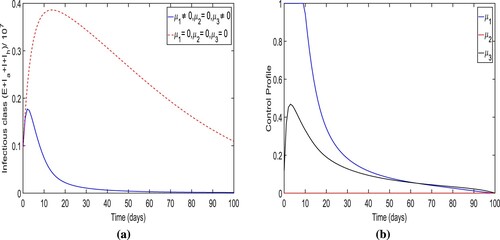
Figure 13. The figure depicts the trajectory of total infectious cases and control profile for the case of strategy C.
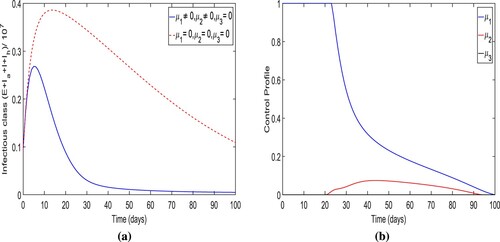
Figure 14. The figure depicts the trajectory of total infectious cases and control profile for the strategy D.
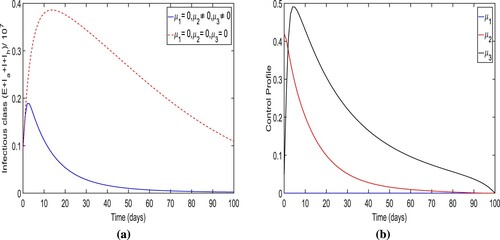
Figure 15. The figure illustrates the optimal trajectory of total infectious cases and control profile for control strategy E.
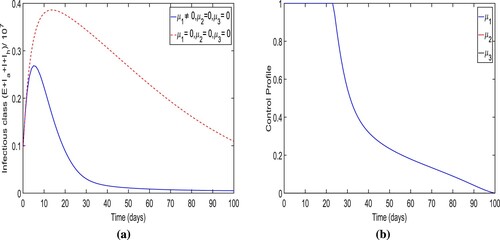
Figure 16. The figure determines the optimal trajectory of total infectious cases and control profile for intervention strategy G.
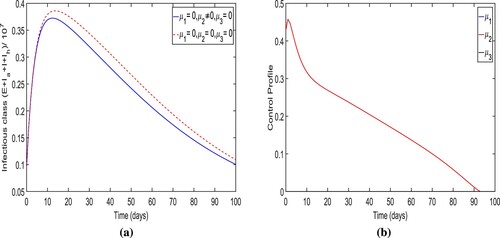
Figure 17. The figure illustrates the trajectories of total infectious cases and control profile for control strategy G.
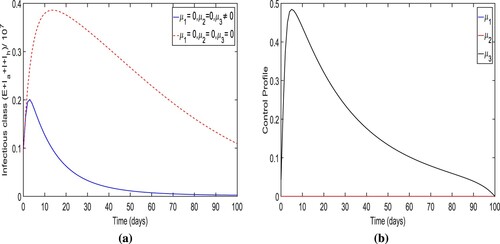
Table 5. Control measures with increasing order of total infection cases avoided.
Figure 20. Comparison of all intervention strategies in terms of total cost and number of averted cases.

Table 6. ICER computations for strategies F and G.
Table 7. ICER computations for strategies D and G.
Table 8. ICER computations for strategies C and G.
Table 9. ICER computations for strategies E and C.
Table 10. ICER computations for strategies E and B.
Table 11. ICER computations for strategies E and A.

